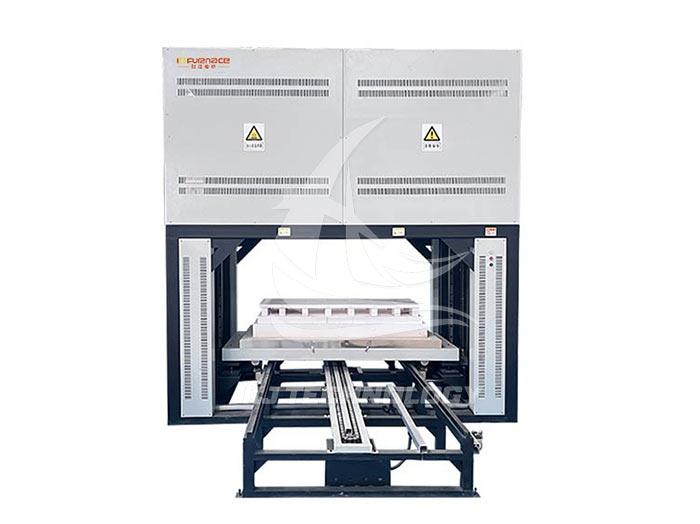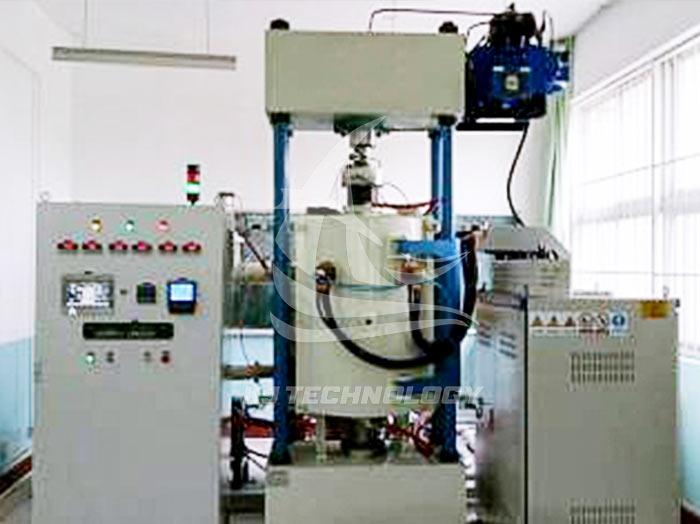Advantages of gas quenching furnace
 10-27-2025 Author: KJ technology
10-27-2025 Author: KJ technology
Gas quenching furnaces achieve metal heat treatment through high-pressure gas circulation cooling. Compared with traditional oil quenching, water quenching and other processes, they have the following significant advantages, covering multiple dimensions such as process performance, product quality, environmental safety and economy:
1. Process performance advantages
Strong controllability of cooling rate
By adjusting the gas pressure, flow rate, and gas type (such as nitrogen, helium), the cooling rate can be precisely controlled. For example:
High speed steel quenching: using high-pressure nitrogen can achieve a cooling rate close to oil quenching, ensuring the formation of martensitic structure;
Precision alloy processing: Low pressure gas cooling can reduce thermal stress and avoid crack formation.
Excellent temperature uniformity
The gas circulation system (such as jet cooling nozzle) ensures that the airflow evenly covers the surface of the workpiece, and the temperature field uniformity can reach within ± 5 ℃. Compared to the deformation caused by rapid local cooling of the workpiece during oil quenching, gas quenching can significantly improve dimensional stability.
High process flexibility
Support multiple cooling programs:
Martensitic transformation zone: using a small air flow to slow down the cooling rate and reduce the transformation stress;
Near the Ms point: The isothermal retention function can reduce the temperature difference between the surface and the heart, and control distortion.
2. Product quality improvement
Extremely small deformation
Gas cooling has no impact from liquid media and its cooling uniformity is better than oil quenching. Typical case:
Automotive transmission gears: reduced tooth profile distortion and reduced outer diameter distortion;
Die casting molds: thermal distortion is controlled within a very narrow range, resulting in higher dimensional accuracy.
Excellent surface quality
Zero oxidation: vacuum environment+inert gas protection to avoid surface oxidation and decarburization of the workpiece;
No medium residue: After quenching, there is no need for cleaning and it can be directly processed (such as coating and machining).
Controllable metallographic structure
By adjusting the cooling parameters, the formation of microstructures such as martensite and bainite can be precisely controlled. For example:
Nickel based high-temperature alloys: obtain fine and uniform precipitation of γ 'phase, enhance high-temperature strength;
Titanium alloy: Control the morphology of alpha phase and optimize fatigue performance.
3. Environmental and safety advantages
Clean and pollution-free
The gas quenching medium is neutral gases such as nitrogen and helium, and the emissions are non-toxic;
Compared to oil quenching: eliminating smoke emissions, eliminating the need for alkaline cleaning processes and oily wastewater treatment.
High operational safety
No flammable medium, completely eliminating the risk of fire;
Vacuum environment reduces high-temperature oxidation splashing and ensures the safety of operators.
Gas recovery technology
By adopting nitrogen and hydrogen recovery systems, the recycling rate is higher and the operating costs are significantly reduced. For example, high-pressure gas quenching furnaces use gas recovery to make the cost of single piece processing close to the level of oil quenching.
4. Economy and production efficiency
Integrated production capacity
Support single chamber, double chamber, and three chamber low-pressure carburizing+high-pressure gas quenching production lines to achieve continuous operation;
Typical production capacity: The annual processing capacity of automotive transmission gears can reach millions of pieces, reducing overall costs.
Long equipment lifespan
The heating chamber adopts graphite tube or molybdenum alloy radiation heater, which is resistant to high-pressure airflow erosion and has less deformation;
The all metal structure heating chamber has a longer lifespan and lower maintenance costs.
High reproducibility of the process
PLC and programmable temperature controller achieve fully automatic control and digital management of process parameters;
To avoid human error and ensure consistency in the quality of bulk products.








